Having dry eyes with contacts is a pain. Not only is it bothersome, but it distracts you from everything you’re doing and in the long run it can leave you with some unwanted eye-health problems.
In this article, I will discuss the best strategies to beat dry eyes with contacts.
The Problem
It may not be intuitive to most people exactly how and why having dry eyes with contacts is bad in the long run. Before get into the causes and fixes of dry eyes with contacts, I will review the different parts of the eyes affected by dryness with contacts.
It Affects The Glands
The tears which keep our eyes moist and lubricated are produced from glands (plural). It is common to think of the tears as being a simple substance produced by a single gland, but in fact, our tears are a very complex mixture of many different substances, all of which are required in very specific proportions in order for our tears to function properly.

The most important of these glands are:
The Lacrimal Gland
The lacrimal gland is the largest of the tear glands and produces the bulk of the tears known as the ‘aqueous layer’. The lacrimal gland is physically situated above the eye and never comes into direct contact with contact lenses. Therefore, this gland is not generally known to be affected by contact lens wear.
The Meibomian Glands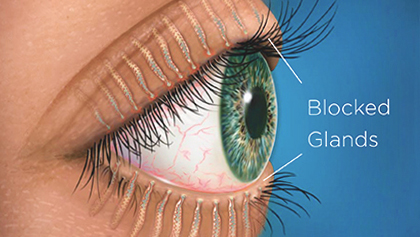
The meibomian glands are vertically aligned inside the top and bottom eyelids. The meibomian gland openings are located along the top and bottom eyelid margins (aka the waterline).
The meibomian glands produce an oily substance which is crucial in maintaining healthy tears. These oils make up the part of the tears known as the ‘lipid layer’.
Contact lenses are in constant contact with the inside of our eyelids and over time and lead to inflammation of the eyelids which can impair the function of the meibomian glands (aka Meibomian Gland Dysfunction).
*Note that contact lenses are not the only thing that can cause Meibomian Gland Dysfunction.
The Conjunctival Goblet Cells
The conjunctival goblet cells are not glands per se, but rather individual cells which produce mucins that hydrate the surface of the eye and provide lubrication between the surface of the eye and the inside of the eyelids (and contact lenses).
You can read more about tear film mucins here.
Though the impact of contact lenses on the conjunctival goblet cells is not fully understood, studies have shown the contact lenses wear decreases the number of these cells.
It Affects The Conjunctiva
The Palpebral Conjunctiva
The layer of skin on the inside of the eyelids is called the palpebral conjunctiva. This layer is in constant contact with contact lenses, particularly the palpebral conjunctiva of the top eyelids. When the palpebral conjunctiva is overly irritated by contact lenses it develops a condition called giant papillary conjunctivitis aka GPC.
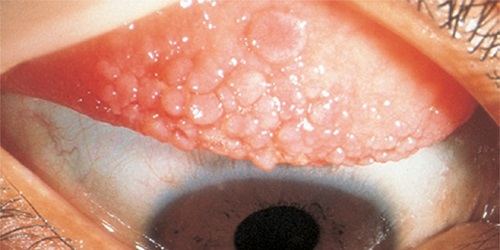
The palpebral conjunctiva is also sometimes known as the tarsal conjunctiva.
GPC typically causes itchiness and the sensation that there is always something inside the eyes.
*Note that GPC can also be caused by allergies.
The Bulbar Conjunctiva
The bulbar conjunctiva is the skin that covers the white part of the eyeball. Contact lens over-wear can affect the bulbar conjunctiva in many ways, and almost always results in irritation and redness.
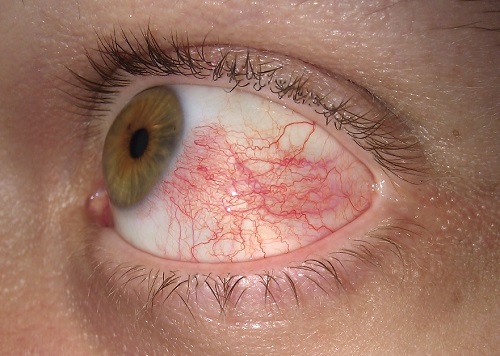
It Affects The Cornea
The cornea is the clear tissue that covers the colored part of the eye called the iris. The cornea is of utmost importance as it’s the tissue that directly supports contact lenses and it must remain clear for us to maintain clear vision. If contact lenses negatively affect the cornea in any way, it can have detrimental effects on our vision.
Contact lens over-wear can cause a rather insidious corneal condition called superficial punctate keratitis (SPK), aka punctate epithelial erosions (PEE), which is slowly but gradually degrade the quality of vision without much discomfort in the early stages.
More apparent corneal complications from contact lens over wear are things like corneal infiltrates and corneal ulcers which will feel very uncomfortable, even downright painful.

Causes & Solutions
Now that we know how the eyes are affected b dry eyes with contacts, let’s run through the most common causes and how to address them.
1. Contact Lens Over-Wear
Nowadays we lead such busy lives that we are often out of our homes for 12, 14, even 16 hours/day. For contact lens wearers that means that your eyes are logging some serious mileage with those little bits of plastic in them.
Add to that our non-stop on-the-go lifestyles which result in using contact lenses every single day of the week.
Essentially, the reality for many contact lens wearers is that they wear their contacts every waking minute of their lives.
If you fall into that category and you experience dry eyes with contacts, that is most likely a significant reason why.
What can be done about contact lens over-wear?
It depends on how advanced the complications have become.
Reduce Wear Time
If you are in the very early stages of contact lens over-wear and only experiencing mild end of day dryness it may suffice to reduce the number of hours of wear by a a few hours a day. It may also help to reduce the number of days per week that the lenses on wore.
Holiday From Contact Lens
If you are experiencing severe dryness to the point where contact lenses on only tolerable for a few hours per day, you may need to take a break from contact lenses for a while.
If you’re experiencing dryness with contact lenses and you’re not sure how long you should be wearing your contact lenses, visit your eye doctor to formulate an contact lens wearing schedule that’s right for you.
The problems that arise from contact lens over-wear are also commonly the same problems that can arise from the number 2 reason dry eye with contacts.
2. Low Quality/Poorly Fitting Contact Lens
Everybody’s eyes are different and there is no one contact lens brand that will fit perfectly on everybody’s eyes. Before starting to wear any brand of contact lenses, it is important the suitability of that brand for your eyes is assessed. This is achieved during a contact lens fitting with your eye doctor.
If this crucial step is skipped, it is possible that you’re wearing a contact lens that rubbing excessively against your cornea of against the sensitive skin on the inside of your eyelids. Over time, this can lead to MGD, GCP, SPK, etc.
What can be done to prevent dry eye contacts from wearing low quality contact lenses?
Consult with your eye doctor
Make sure you show up for your routine yearly eye exam and ask your eye doctor if you’re still wearing the most appropriate contact lenses for your eyes.
Skipping eye exams for years on end and always ordering the same old contact lenses you were wearing 10 years ago is exactly how you get yourself into big trouble.
Research Top Brands
There’s no harm in looking up contact lens brands that you’d like to try. You can read more about contact lenses for dry eyes and asked your eye doctor to set you up with a free trial.
3. Environmental/Situational Dryness
Sometimes dry eyes with contacts is inevitable and even normal depending on the circumstances.
The Weather
So for example it’s an exceptionally hot day and you’ve been out all afternoon without much hydration, it’s normal that your contacts start to feel dry.
The Shower
Another common example is showering with your contact lenses. I’ve never really understood the reasons why but every time I’ve accidentally taken a hot shower with my contact lenses on, they’ve felt very dry afterwards.
Sleeping With Contacts
Almost everyone who wears contact lenses has at one time or another fallen asleep with their contact lenses in. When you wake up you are sharply reminded of that fact because you’re eyes will feel very dry and your contacts will feel like sand.
What can be done about environmental/situation dry eyes with contacts?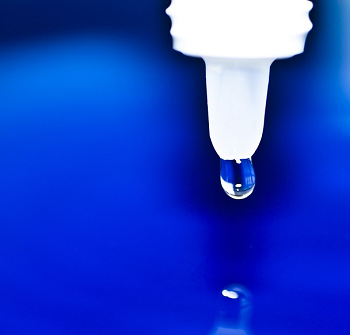
Foresight
Your best bet is to learn from experience what situations cause the most dryness when you’re wearing your contact lenses and plan around it by taking your contacts out beforehand.
Eye Drops
Sometimes this is not always possible, in which case it’s good for contact lens wearers to always a bottle of eye drops for contact lenses handy.
Note that not all eye drops are suitable for use with contact lenses. HYLO eye drops are a great choice, but there are several other brands that are designed specifically for contact lens wearers.
4. Allergies
If you’re one of those unfortunate people, allergies can wreck havoc on your eyes. If you fall into this category, I don’t need to explain. You already know.
What can be done to beat dry eyes with contacts from allergies?
Trigger Avoidance
Dealing with allergy symptoms is always going to be more difficult then preventing them from occurring in the first place.
If at all possible, learn exactly what your allergic triggers are do your best to mitigate or eliminate them from your environment.
Regular Eye Drops & Cold Compresses
If you’re allergies are just mildly irritating your eyes, it must suffice to use regular (non-medication) eye drops to flush out any allergens hanging around in your eyes. Using eye drops a few times a day may be all you need.
In addition, placing a cold damp facecloth over your eyes can help reduce that burning itching feeling that allergies bring about.
Anti-Allergy Eye Drops
When regular eye drops and cold compresses don’t cut it, you’ll have ask your doctor or eye doctor for anti-allergy or anti-inflammatory eye drops.
There are several levels of strength of these eye drops and your doctor will determine the most appropriate one for you.
Note that most medication eye drops are not approved for use with contact lenses. Therefore, you will have to use the medication at least 10 to 15 minutes before you put your contacts in.
5. Reduced Blinking
One of the most important functions of blinking is to re-moisten the eyes by spreading a thin layer of tear over the entire surface. If we stopped blinking, the tears on our eyes would evaporate within seconds and our eyes would dry out.
The average natural blink rate is around 12 blinks/minutes. However, there are certain activities that affect our blink rate. For example, when we converse with other our blink rate tends to increase. On the other hand, when fixate on objects our blink rate tends to decrease.
As it just so happens, these days we do a lot of fixating with our eyes. And I mean a lot. Essentially, when ever we are using a computer or form of digital device, our eyes are fixated on the screen and our blink rate decreases. This leads to less tears on the surface of your eyes which causes dryness.
When you’re wearing contact lenses, this dryness is exacerbated because your contacts suck up all the available moisture, leaving nothing to lubricate the contact lenses moving around on the eye’s sensitive surface.
What can be done about reduced blinking leading to dry eyes with contacts?
Taking breaks
When we work at a computer and we’re really into a project, it’s easy to lose track of time. Taking breaks from staring at the screen is important to at least temporarily restore normal blink rates which helps restore normal tears on the surface of your eyes.
The 20/20/20 Rule
The 20/20/20 Rule refers to a guideline for heavy computer users to follow in order to relieve end-of-day eyestrain. However, it also helps with dry eyes with contacts due to reduced blink rate.
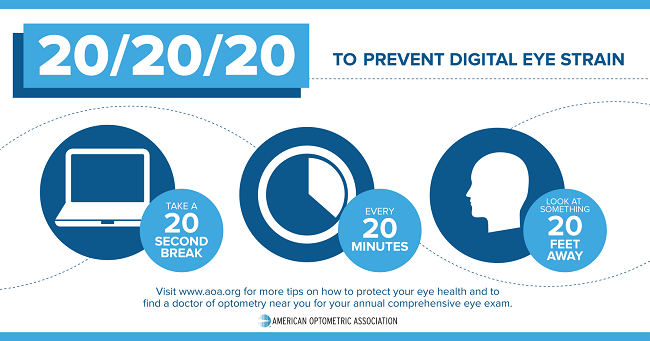
6. Lack of Sleep
Many studies have confirmed what we all intuitively know. When we don’t get enough sleep our eyes feel dry.
Technically speaking, lack of sleep has been shown to lead to tear hyperosmolarity (the tears lack enough water), lower tear break-up time (the tears evaporate very quickly) and reduced tear production. You can read more about the effects of sleep deprivation on our eyes in the article Sleep Deprivation Reduces Tear Secretion and Impairs the Tear Film or in the results of the study The association of sleep quality with dry eye disease: the Osaka study.
If you’re eyes are dry because of lack of sleep and you proceed to wear contact lenses for a full 12 hours, chances are you’re going to experience dryness.
What can be done about lack of sleep leading to dry eyes with contacts?
Sleep more!
So much easier said than done right?
There are way too many reason why one may not be getting enough sleep for me to get into in this article. If you believe that this is the reason for your dry eyes with contacts, I recommend bringing up your sleeping issues with your family or sleep doctor.
Summary
This is by no means a complete list of all the reasons that can cause dry eyes with contacts. If you know of something that you think should be on this list, by all means please let me know in the comments below!


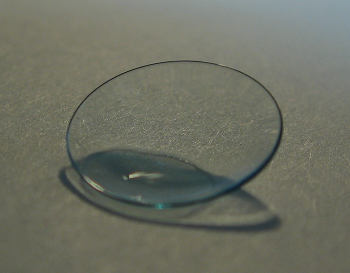



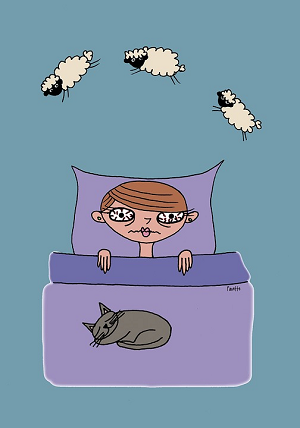


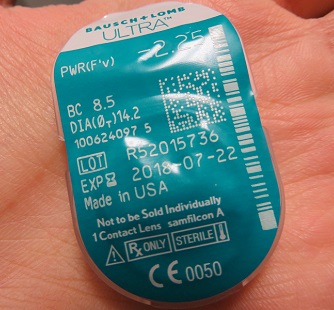
Leave a Reply